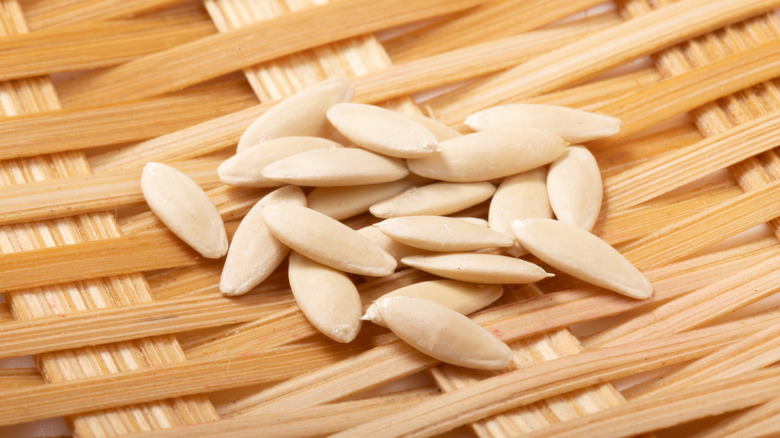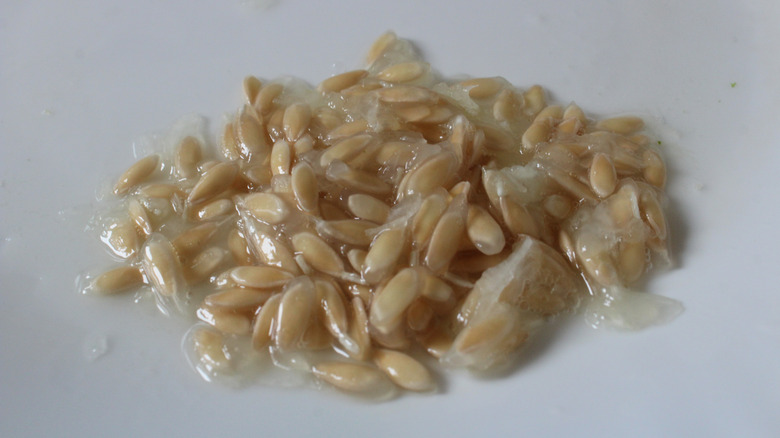The Budget-Friendly Trick To Fill Your Garden With More Free Cucumbers Each Year
Saving seeds from your garden is a great way to save money and ensure you are growing the hardiest varieties of vegetables. Cucumbers are a beloved home gardener's choice, and learning how to harvest cucumber seeds will give you plenty of free seeds to grow again next year.
All seed saving is not the same. Cucumbers and other fleshy vegetables require what is known as the 'wet method', where the seeds are scooped from the overripe but not rotten vegetable, placed in a cup of water, and allowed to ferment for a few days, or until mold develops on the surface of the water. The seeds are then strained, and the rotten flesh of the cucumber is rinsed away. Dip the seeds in a 20% bleach and water solution to prevent the transfer of disease and finally dip them into fresh water and lay them out on a plate to dry.
The 'dry method' is used for most herbs, flowers, and vegetables. This method leaves the seeds on the plant until they are dried, then the entire plant is pulled up or the seed pods are removed. Seeds are then allowed to dry completely before being saved in packets or jars until the next season. Saving seeds from cucumbers is not considered the easiest seed to save because they can and do cross with other varieties of cucumbers if you are growing multiple types in your garden. Do not let this discourage you. If you plan on growing cucumbers for seeds, grow only one variety to ensure you save seeds that will grow into exactly what you are looking for.
How to save cucumber seeds
A good seed saving program for beginners starts with a few simple rules. When saving seeds, do not plant hybrids, which are a cross of different varieties to get the best from each in a single crop. When you save hybrid seeds, you cannot be sure what results you will get. Some hybrid seeds are even sterile. Only save seeds from healthy, disease-free plants. Watch your plants throughout the season and save seeds from the biggest and most prolific plants. Save seeds from overripe cucumbers. They should be yellow and orange, with soft, mushy insides. This usually happens after the first frost. Seeds from a ready-to-eat cucumber are underdeveloped and will not germinate.
Once your cucumber seeds are completely dry, avoid these common seed storage mistakes and store them in packets or jars labeled with the date they were saved and the variety. For best germination rates, use your seeds within three years of saving them. Keeping them any longer than that, and the germination rates will drop, or they may not grow at all. Saving cucumber seeds year-to-year means free cukes, and you know they will grow well in your area. It is an easy way to save money and grow a reliable crop.

